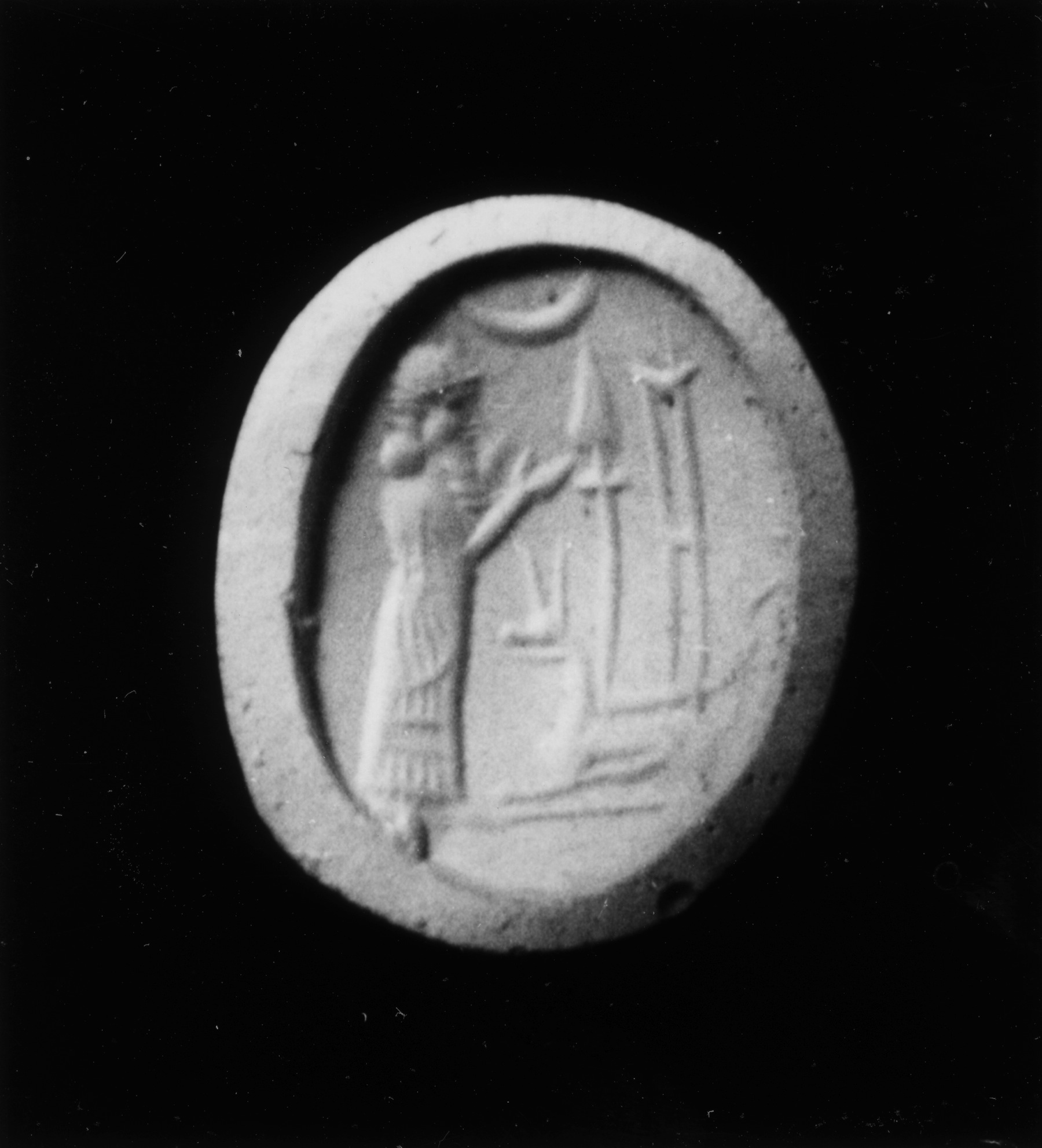Stamp Seal with Worshipper before Symbols
(Ancient Near East )
During the 1st millennium BC, Aramaic alphabetic script written on parchment rather than clay tablets led to the gradual disappearance of the cylinder seal. Stamp seals returned to Mesopotamia for the first time since the 4th millennium BC. Due to the decreased area of the stamp seal, images became less complicated. The most common scene shows a single worshiper standing before divine symbols, in this case including the spade of Nabu, god of wisdom, and the crescent of the moon-god Sin.
Provenance
Provenance (from the French provenir, 'to come from/forth') is the chronology of the ownership, custody, or location of a historical object. Learn more about provenance at the Walters.
Sadie Jones (Mrs. Henry Walters), New York [date and mode of acquisition unknown]; Sale, Joseph Brummer, New York, 1941; Walters Art Museum, 1941, by purchase.
Geographies
Mesopotamia (Place of Origin)
Measurements
H: 5/8 x W: 1/2 x D: 13/16 in. (1.6 x 1.3 x 2.1 cm); H of bezel: 9/16 in. (1.5 cm)
Credit Line
Museum purchase, 1941
Location in Museum
Accession Number
In libraries, galleries, museums, and archives, an accession number is a unique identifier assigned to each object in the collection.
In libraries, galleries, museums, and archives, an accession number is a unique identifier assigned to each object in the collection.
42.801




